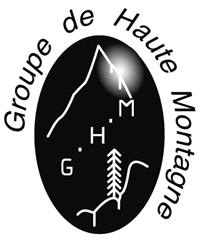Often cited as one of the greatest living North American alpinists, George Lowe began climbing at an early age when he joined his uncle Ralph Lowe, who was teaching his sons, Mike, Greg and Jeff, how to rock climb. Lowe would eventually author many major new climbs in the Tetons, Canadian Rockies, Alaska, and the Himalaya, and perhaps the following four ascents – or near ascents – exemplify his climbing career.
In 1974, with ex-British climber Chris Jones, Lowe made the first ascent, alpine style, of the north face of North Twin in the Canadian Rockies. Canadian Barry Blanchard, no mean alpinist himself, described this face as a sheer black wall of north-facing limestone, steeper than the Eiger, one and half times the height of El Capitan, and the hardest in the Rockies. It is also a full day of arduous mountain travel from the nearest road. Blanchard argues that the seven-day, 1974 ascent, with “a rope, a rack, and two packs” was harder than anything that had been done in the European Alps, if not beyond, at that time.
Over seven days of alpine style climbing in 1977, Lowe and Michael Kennedy made the first ascent of the Infinite Spur on the huge south face of Foraker, Alaska, a route that would become one of the great test pieces of the range. In 1983 he made the first ascent of the Kangshung Face of Everest. Forcing the lower ca 1,100m rock buttress, which now bears his name and is the technical crux of the route, was largely down to the persistence of Lowe. The first attempt, in 1981, reached around 7,000m, but a return two years later finished the job.
But for many alpinists perhaps even more impressive than these ascents is the 1978 attempt on the north ridge of Latok I, dubbed the Walker Spur of the Karakoram. Jim Donini, Michael Kennedy, George and his cousin Jeff Lowe spent 21 days climbing over 100 pitches above the Choktoi Glacier to reach a point around 150m below the unclimbed summit. They may have surmounted all the difficulties when a combination of wind, cold and Jeff Lowe’s rapidly deteriorating condition due to altitude sickness forced a retreat. It remains one of the finest and most notable near misses in the history of alpinism, and despite literally dozens of subsequent attempts, no one has yet completed the route to the summit.
Micheal Kennedy writes: "there are few climbers who deserve to be described as titans. George Lowe is one of them. In a career that spans more than five decades and multiple generations, he has excelled in every form of the art, nowhere more so than in its most demanding and consequential genre: alpine climbing in the vast wilderness of North America and the Himalaya. From bold winter ascents during the late 1960s in the Tetons of Wyoming, and ground-breaking new routes in the early 1970s on Mount Alberta and North Twin in the Canadian Rockies, through a new route on Everest in 1983, and a solo ascent of Dhaulagiri in 1990, George has always exhibited a commitment to technical difficulty, small teams, and excellent style, as well as a fine-tuned sense of the great risks – and immense rewards – fundamental to operating in the alpine environment. In 1977, I joined him on the Infinite Spur of Mount Foraker, a climb that forever transformed my understanding of what is possible for a team of two in the great mountains of the world.
A year later, with Jim Donini and Jeff Lowe, we came close to making the first ascent of Latok I in Pakistan. Although we failed to reach the summit, we came home with something far more important: lifelong friendships that exemplify the brotherhood of the rope. George continues to climb with an energy, ability, and enthusiasm that exceeds partners fifty years his junior – witness his 26-hour ascent of The Nose on El Capitan in 2014 and a rapid ascent of Mount Huntington in Alaska in 2015. However, it is his personal attributes that endear him to so many. He remains humble and grounded, despite a life of noteworthy achievement, and is among the warmest, kindest, and most thoughtful people I know”.
In the early 1970s Lowe gained a doctorate in physics, and this led to a long and successful career in systems engineering. He is an Honorary member of both the American Alpine Club and (British) Alpine Club, and in 2014 was president of the Piolets d’Or Jury.
A summary of some of his many fine ascents follows:
|
1965 1966 1968 1969 1971 1972 1973 1974 1975 1976 |
1977 1978 1980 1983 1986 1990 1991 Lowe continues to climb, and as noted by Micheal Kennedy, summited Mount Huntington via the West Face Couloir when he was 70. |




